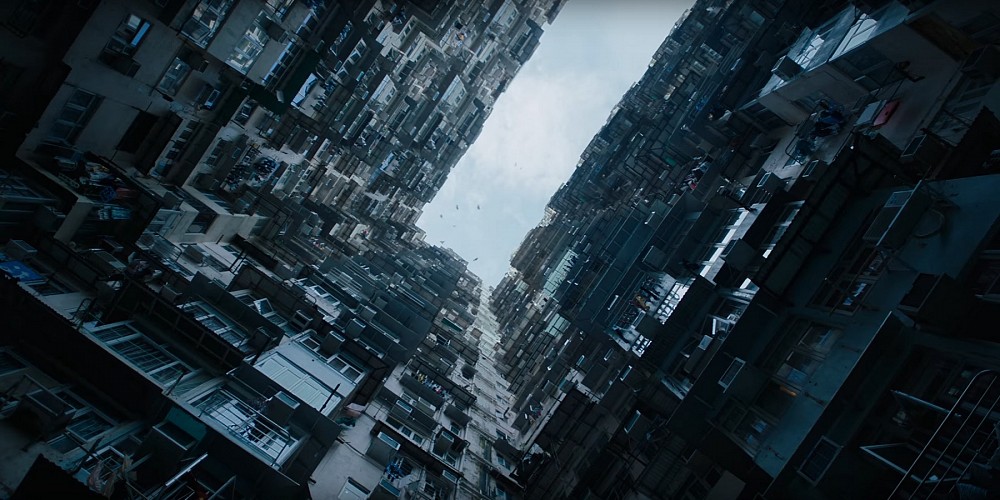Kowloon Chic: The Atemporality of Ghost in the Shell
With a live-action adaptation of the Ghost in the Shell franchise looming, I thought I’d take a crack at applying Bruce Sterling’s thoughts on the concept of ‘atemporality’ (as the concept applies to creative artists), to the films Ghost in the Shell (1995) and Ghost in the Shell 2: Innocence (2004).
In the first of these two films, viewers encounter a sci-fi vision of the future located somewhere between dystopia and utopia. The movie draws heavily from earlier films like Blade Runner; both films merged noir with cyberpunk aesthetics and dealt with the use of cyborgs (or androids in Blade Runner’s case) as tools of law enforcement.
In Ghost in the Shell, as in Blade Runner, existential questions about the nature of thought, consciousness, and ‘humanity’ for the cyborg permeate the narrative. But unlike Blade Runner, characters in Ghost in the Shell (particularly The Major Kusanagi), are not androids, but former humans that are now heavily posthuman.
Major Kusanagi’s brain is the only part of her physical body that still retains organic tissue, and even large parts of that organ are artificial. This leads the Major to wonder if she was ever human at all, since her memories could have been implanted, edited, or erased and, as she points out to her partner Batou at one point, she has no evidence that her brain is anything but completely artificial either. So what does this have to do with atemporality, and how does Ghost in the Shell stand up to Sterling’s criticisms of similar creative efforts?
Sterling criticizes efforts like Ghost in the Shell, characterizing them as “Frankenstein mashups” that “lead to the kind of leveling blandness of ‘world music’” (Sterling). However, Ghost in the Shell manages to “refuse the awe of the future [and] refuse reverence to the past” (Sterling), as Sterling urges his audience to do.
The universe of Ghost in the Shell acknowledges and explores both what Sterling calls the ‘Gothic High-Tech’ and what he terms ‘Favela Chic’ (i.e.: failed modes of historicizing culture and failed systems of knowledge management; and the underground, pseodu-punk, pseudo-legal network culture that’s emerging, or has emerged in the case of Ghost in the Shell, as the dominant order of society). The franchise transcends even vaguely-postmodern hybrid labels like ‘cyberpunk noir’ by attempting to represent responses to the projected dominance of network culture in markedly ahistorical ways.
The Major and one of her subordinates have an interesting conversation near the beginning of the film. The subordinate, Togusa, chose not to augment his body beyond the necessary brain implants required to maintain covert communication with his team. He even goes so far as to continue to use a barely-regulation old-school revolver as his weapon of choice. While Batou criticizes Togusa for this, Kusanagi reminds viewers that: “if we all reacted the same way we’d be predictable, and there’s always more than one way to view a situation…overspecialize and you breed in weakness. It’s slow death.” (Sterling)
Like Sterling’s hypothetical person who dresses like an Astronaut to perform their daily routine, Togusa embraces the outmodedness of his aesthetic and personal preferences, and this is seen as an advantage by Kusanagi. It’s a form of ‘temporal diversity’ that elevates the film (and its sequel) above the level of your everyday postmodern pastiche.
In Ghost in the Shell 2: Innocence, the same team of detectives (minus Major Kusanagi, who has ‘ascended’ by merging with an AI at the cost of losing her individuality, becoming both a part of the network and a network in-and-of herself), investigate a rash of killings perpetrated by sex dolls.
As the plot progresses, both the advances and advantages of the future and the abuses and drawbacks of progress are showcased. Without giving too much away, the mass-copying of human consciousness and a massive submarine parked in international waters are involved. More existentialist banter ensues, this time with a few somewhat ham-fisted shout-outs to 18th century enlightenment thinkers like Descartes.
Speaking of AI, (on a side note) a recent article in New Scientist has presented some disturbing evidence of neural networks demonstrating a nascent ability to encrypt their own data. The Anthropocene was fun while it lasted. Prepare to ascend.
Back to Ghost in the Shell: to sum up and to laud the IP a bit, both films’ visuals are exquisite and both are worth watching (I actually like the sequel a bit better than the first movie, which I expect is blasphemous to admit to hard-core fans of the franchise). The Ghost in the Shell animated series is also worth checking out. At its best, the franchise echoes Sterling’s call for us to become “‘multi-temporal’, rather than multi-cultural” (Sterling) in order to more effectively interrogate how we form the parameters of what we consider ‘problems’ before trying to solve them. In working out the mysteries they encounter, the Major’s team performs this kind of interrogation of the structures that form the networks that entangle them.
Works Cited
Sterling, Bruce. “Atemporality for the Creative Artist.” Wired.com. Conde Nast Digital, 25 Feb. 2010. Web. 14 Nov. 2016.

